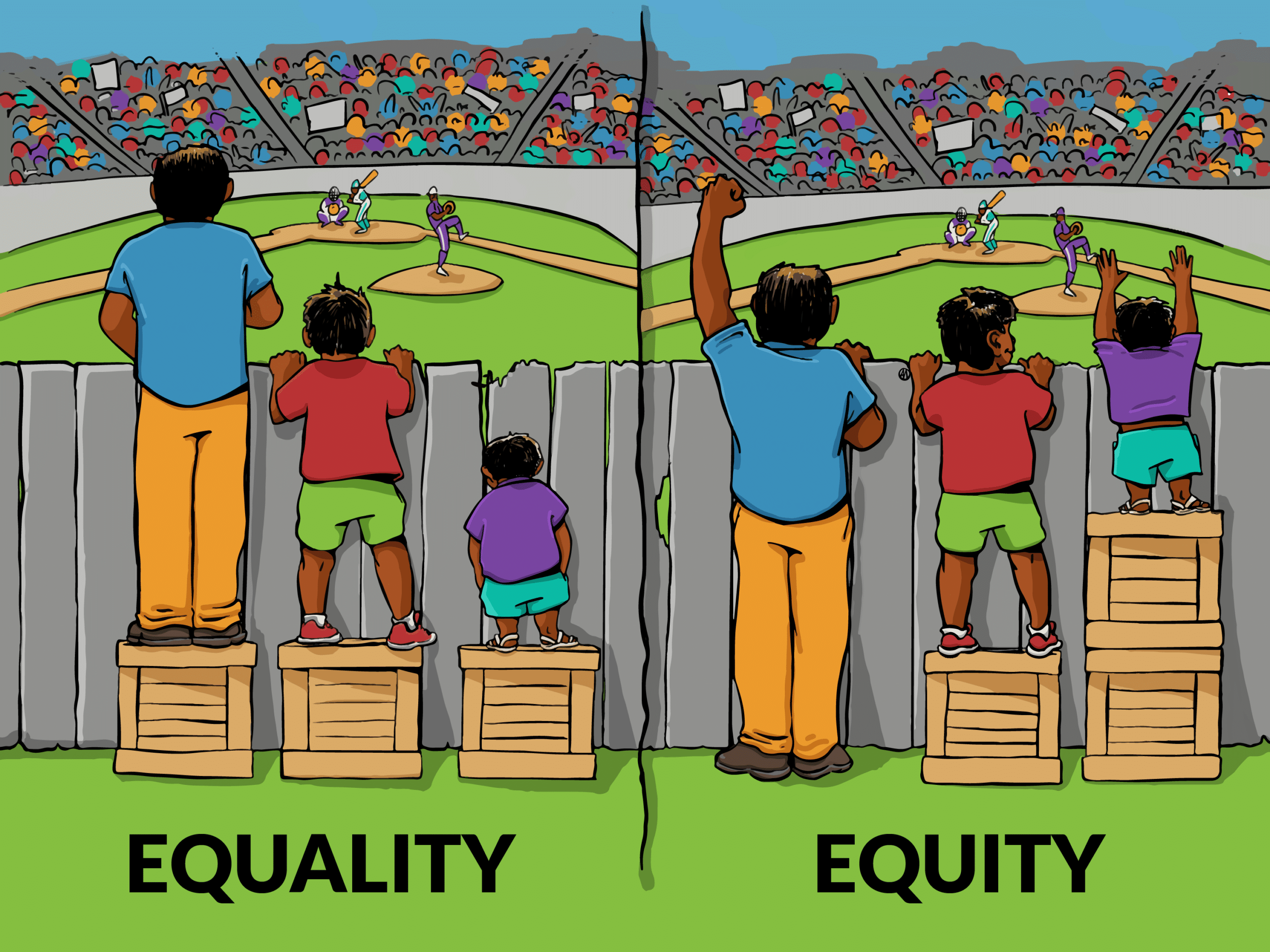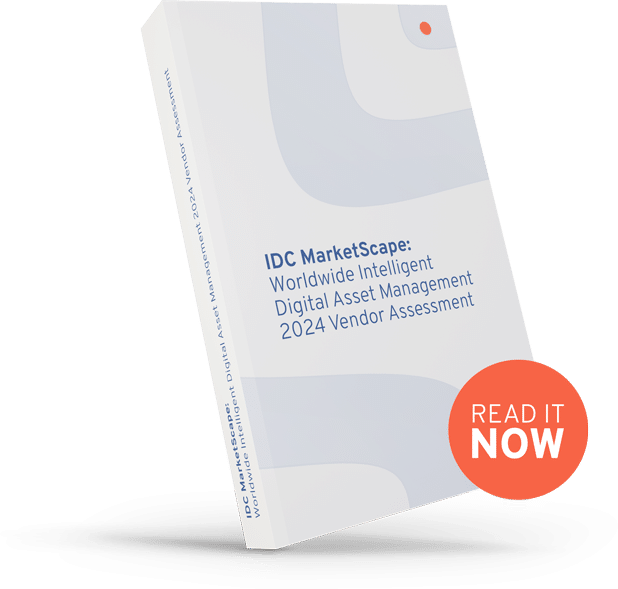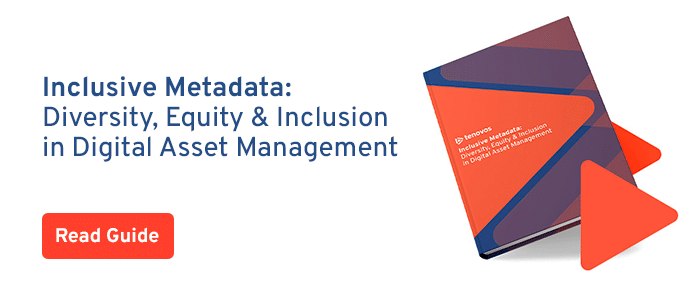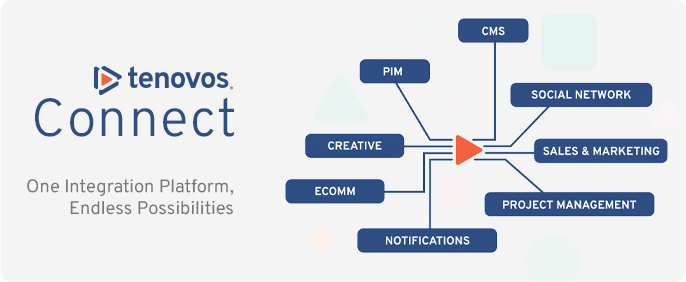
Over the last few years, most companies and organizations have had to reckon with major social and cultural upheavals, not only in relation to the global pandemic, but in response to surging movements addressing racism, income inequality, gender discrimination, climate change, and other pressing issues. In this volatile environment, it is more important than ever for organizations to define, uphold, and express their values around diversity, equity, and inclusion (DEI).
While the importance of DEI may be obvious when it comes to hiring, leadership, and compensation, the implications for digital asset management and metadata may not be as readily apparent. However, the teams who rely consistently on solid DAM — marketing, publicity, social media — are also the ones that shape and disseminate a company’s public-facing statements and programs. They are on the front lines of community and media relationships that can build — or damage — an organization’s reputation across a broad audience.
These teams need quick and easy access to images and content that reflects and appeals to diverse communities. If the metadata applied to these assets is out of date, inappropriate, or non-existent, they won’t be able to create the right content as quickly, or with as much confidence.
What Do We Mean by DEI?
Before we dive into how DEI can improve your DAM metadata, let’s take a minute to define our terms.
Diversity is the simple fact that people show up in this world in a wide variety of shapes, sizes, and colors, with a broad range of abilities, experiences, and needs. We tend to group people according to convenient categories such as gender, race, religion, etc., but there is a great deal of variation within each of these groups, and their boundaries and definitions continually shift and change over time. Being able to acknowledge, embrace, and celebrate this diversity makes our organizations stronger and more adaptive.
Equity is making sure everyone has access to opportunities to succeed. It is not the same as “equality,” which means that everyone receives the same treatment or resources. You may be familiar with this well-known image of three people of different heights peering over a fence to watch a baseball game. The image is divided in two vertically. On the left, each person stands on a box of the same height, but only two of the three can see over the fence. This is equality, but equal distribution of resources results in unequal access. On the right, the shortest person has been given two boxes, while the tallest receives none. This is equity, a result where everyone can enjoy the game. True equity counteracts the forces of discrimination and historical disadvantage that have made it harder for some people to succeed than others.

Image: Interaction Institute for Social Change | Artist: Angus Maguire
Inclusion is the acknowledgement of diversity while striving toward equity for everyone. When we are inclusive, we acknowledge that we’re not all starting from the same place. Some of us have bigger challenges than others and inclusive behavior means actively taking steps to mitigate or remove those challenges. This may mean making sure your Zoom meeting has live captions turned on, mentoring students from communities that are underrepresented in your industry, or making sure your metadata accurately represents the people in your organization’s photos.
Why Is DEI Important for Digital Asset Metadata?
Diversity, equity, and inclusion is first and foremost about people. If your DAM contains content about people, it is a platform for the representation of social identities, such as gender, sexual orientation, ethnicity, etc. Unless every image of a person in your DAM is a generic figure like those on restroom signs (and even those can express gender difference), you are managing data about social identity. There is no “default” or “neutral” person; we all have identities that make a difference in how we participate at work and in society as a whole.
By incorporating facets of identity into your metadata — in essence, making it DEI-informed — you respect the identities of the people represented in your content and those of the people who use your system.
Inclusive metadata reflects how people see themselves. It may require research; it may change the way you do photo shoots, or collect information about your clients, but in the long run it will help you avoid misrepresentation and make it easier for users to find precisely what they need in your system.
This is especially important when it comes to images. For example, you can’t always correctly identify a person’s race by appearance alone. Other identity facets such as disability or sexual orientation may be impossible to discern. It’s best to collect this information from the subjects of a photo shoot, rather than making assumptions later. With accurately sourced, DEI-informed metadata, underrepresented populations become more visible in your DAM. Users will be able to locate content that accurately reflects the communities they are interested in and deploy that content with more confidence.
They will also be more likely to see themselves and their own identities in your system. Your DAM may not be public facing, but harmful language is harmful no matter where it appears. Employees who see their own identities represented respectfully and accurately in the DAM will know they matter to the organization, which contributes to morale and a welcoming work environment.
How Does DEI-Informed Metadata Contribute to the Bottom Line?
Creating metadata that is respectful and inclusive can broaden your audience, make your content more appealing and respectful, and help your teams function more confidently and efficiently.
Let’s say you want to expand the audience for your products or services to include Asian Americans, a group that is currently underrepresented in your customer base. You need to create marketing materials that appeal to them and show that you understand their concerns and needs. You might already have assets in your DAM that could be used for this campaign, but perhaps they’re tagged with outdated, offensive terminology, like “Oriental,” or they may not have metadata about race and ethnicity at all. If assets aren’t tagged appropriately, you may waste valuable time sifting through hundreds of items. You may even spend time and money recreating assets that already exist. Tagging assets with terminology that aligns with how your customers describe themselves saves time and effort.
DEI-informed metadata also encourages your users to use respectful language in the resulting materials. If your metadata is DEI-informed, there’s less likely to be a surprise PR crisis because someone reproduced a problematic word they found in the DAM. If your users know the metadata in the DAM is as up-to-date and accurate as possible, they will be able to employ those assets and information with more confidence and with less time spent second-guessing.
In the end, DEI matters for DAM, not only because it’s the right thing to do, but because it can help make your communications more accurate, efficient, and cost-effective.
Sharon Mizota is a DEI metadata consultant who helps organizations transform and share their metadata to improve diversity, equity, and inclusion. She has over ten years of experience managing and creating metadata for arts and culture organizations, including Walt Disney Animation Studios, the Academy of Motion Picture Arts and Sciences, the Judy Chicago Research Portal, Curationist.org, and Outwords Archive.
Follow her on Twitter or LinkedIn, or visit her website: www.sharonmizota.com.



